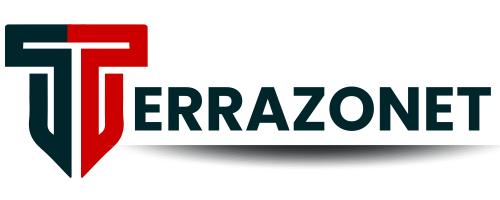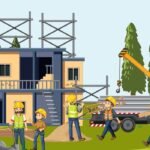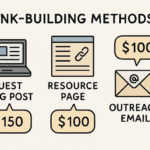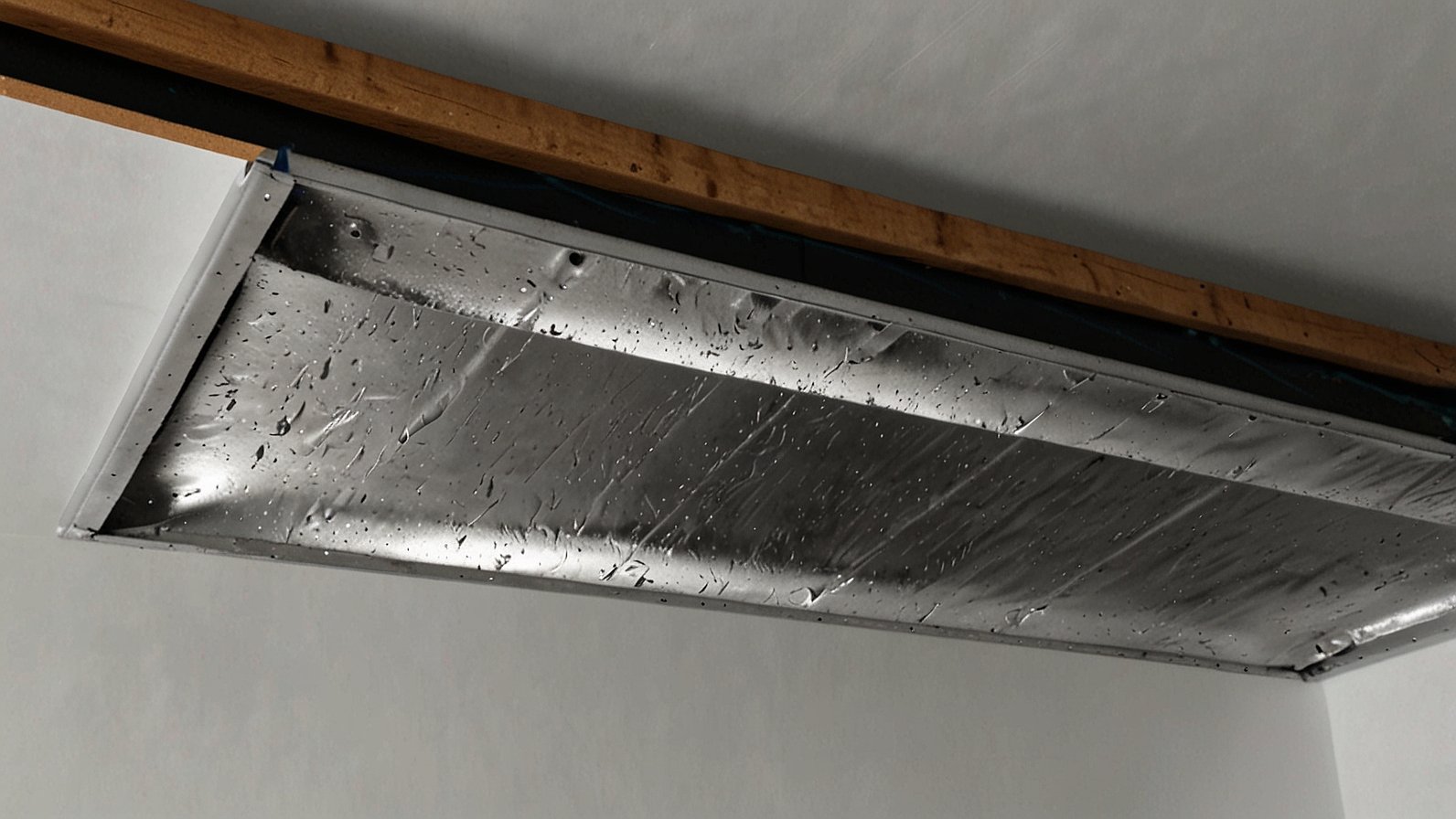Why Your HVAC System Struggles Without Proper Insulation
Most homeowners don’t realize that their heating and cooling costs could be 30% higher than necessary. The hidden culprit? Poor or missing air duct insulation is quietly sabotaging your entire HVAC system’s efficiency.
When ductwork runs through unconditioned spaces like attics, basements, or crawl spaces, uninsulated ducts become a major energy drain. Your expensive conditioned air leaks out while outside temperatures seep in, forcing your system to work overtime just to maintain comfortable indoor temperatures.
The Hidden Energy Thief in Your Home
Think about this: you spend thousands of dollars on a high-efficiency HVAC system, only to lose 20-40% of that conditioned air through poorly insulated ductwork. It’s like filling a bucket full of holes and wondering why the water keeps disappearing.
During summer months, cool air traveling through hot attic spaces can gain 15-25 degrees before reaching your living areas. In winter, warm air loses precious heat as it moves through cold spaces. This temperature exchange doesn’t just waste money – it puts enormous strain on your entire HVAC system, leading to premature wear and costly repairs.
The problem gets worse over time. As your system struggles to compensate for these losses, it runs longer cycles, uses more energy, and fails to maintain consistent temperatures throughout your home.
How Air Duct Insulation Transforms HVAC Performance
Proper air duct insulation acts like a protective barrier, maintaining the temperature of conditioned air as it travels from your HVAC unit to each room. This simple upgrade can improve your system’s overall efficiency by 15-30%.
When ductwork is properly insulated, several performance improvements occur immediately. First, your HVAC system reaches set temperatures faster because less conditioned air is lost during transport. Second, the system doesn’t have to work as hard to overcome temperature losses, reducing wear on critical components like compressors and heat exchangers.
Understanding R-Values and Insulation Types
Air duct insulation effectiveness is measured by R-value, which indicates resistance to heat flow. Higher R-values provide better insulation performance. Most building codes require R-6 to R-8 insulation for ductwork in unconditioned spaces, though R-10 or higher is often recommended for maximum efficiency.
Three main types of duct insulation are commonly used. Flexible blanket insulation wraps around existing ductwork and offers good coverage for irregular shapes. Rigid board insulation provides excellent thermal performance but requires precise cutting and fitting. Spray foam insulation creates an airtight seal but typically requires professional installation.
Each insulation type has specific advantages. Blanket insulation is cost-effective and DIY-friendly for basic installations. Rigid boards offer superior thermal performance in straight runs. Spray foam provides the best air sealing properties but comes with higher upfront costs.
Energy Efficiency Gains You Can Measure
The energy savings from proper air duct insulation are substantial and measurable. Homeowners typically see 10-20% reductions in heating and cooling costs within the first year after installation.
These savings compound over time. A typical household spending $2,000 annually on heating and cooling could save $300-400 per year with proper duct insulation. Over a 15-year period, that represents $4,500-6,000 in energy cost savings – far exceeding the initial insulation investment.
Beyond direct energy savings, insulated ductwork reduces HVAC system runtime. Shorter operating cycles mean less wear on system components, extending equipment lifespan and reducing maintenance needs.
Temperature Control and Comfort Improvements
Uninsulated ductwork creates significant temperature variations throughout your home. Rooms furthest from the HVAC unit often struggle to reach comfortable temperatures, while spaces closer to the system may become too hot or cold.
Air duct insulation eliminates these temperature imbalances by maintaining consistent air temperatures during transport. Every room receives air at the intended temperature, creating uniform comfort throughout your living space.
Humidity control also improves with proper duct insulation. When cool air travels through hot, humid spaces without insulation, condensation can form inside ductwork. This moisture creates ideal conditions for mold growth and reduces indoor air quality. Insulated ducts prevent condensation by maintaining consistent temperatures.
System Longevity and Maintenance Benefits
HVAC systems with properly insulated ductwork experience significantly less stress during operation. When your system doesn’t have to compensate for duct losses, all components operate within their designed parameters.
This reduced stress translates to fewer breakdowns and longer equipment life. Heat exchangers, compressors, and blower motors all benefit from shorter, more efficient operating cycles. Many HVAC professionals report that systems with insulated ductwork require 25-40% fewer service calls.
Filter life also improves with insulated ductwork. When systems run more efficiently, they cycle less frequently, reducing airflow through filters and extending replacement intervals.
Common Insulation Mistakes That Reduce Performance
Many homeowners attempt DIY duct insulation but make critical errors that compromise performance. The most common mistake is leaving gaps or compressed areas that create thermal bridges.
Compression reduces the insulation R-value dramatically. When blanket insulation is squeezed into tight spaces, its effectiveness can drop by 50% or more. Proper installation requires maintaining full insulation thickness while ensuring complete coverage.
Air leaks around insulation also reduce performance. Ductwork joints, connections, and penetrations must be properly sealed before insulation installation. Even small gaps allow conditioned air to escape and outside air to infiltrate.
Installation Considerations for Maximum Impact
Professional installation typically provides the best results, especially for complex ductwork layouts. Experienced installers know how to navigate tight spaces, properly seal joints, and maintain consistent insulation thickness.
DIY installation is possible for straightforward applications, but requires careful attention to detail. Key success factors include choosing appropriate insulation R-values, maintaining proper thickness, and thoroughly sealing all air leaks before insulation installation.
Timing matters for installation projects. Spring and fall offer ideal conditions when HVAC systems aren’t running continuously. This timing allows for thorough inspection and repair of existing ductwork before insulation installation.
Identifying Problem Areas in Your Ductwork
Several signs indicate inadequate air duct insulation in your home. Rooms that never reach comfortable temperatures despite adequate HVAC capacity often have duct insulation problems.
Excessive energy bills compared to similar homes suggest significant duct losses. If your heating and cooling costs seem unusually high, poor duct insulation could be the culprit.
Physical inspection reveals obvious problems. Exposed ductwork in attics, basements, or crawl spaces without visible insulation needs immediate attention. Existing insulation that appears compressed, damaged, or incomplete also requires replacement.
Cost-Benefit Analysis for Homeowners
The return on investment for air duct insulation is compelling. Most installations pay for themselves through energy savings within 3-5 years.
Material costs vary by insulation type and R-value. Basic blanket insulation costs $1-3 per square foot, while premium spray foam applications range from $3-6 per square foot. Professional installation adds $2-4 per square foot, depending on project complexity.
These upfront costs are offset by immediate energy savings and long-term HVAC system benefits. When factoring in extended equipment life and reduced maintenance needs, the total return on investment often exceeds 200-300% over 15 years.
Making the Smart Investment in Your Home’s Efficiency
Air duct insulation represents one of the most cost-effective home energy improvements available. The combination of immediate comfort improvements, ongoing energy savings, and extended HVAC system life makes this upgrade a smart financial decision.
Unlike many home improvements that offer primarily aesthetic benefits, proper duct insulation delivers measurable performance gains that continue year after year. Every month brings lower energy bills and more consistent indoor comfort.
The technology is proven, the installation process is straightforward, and the results are guaranteed. For homeowners serious about reducing energy costs while improving indoor comfort, air duct insulation offers an unmatched combination of benefits and value.
You May Also Read: LogicalDOC: Your Business’s Secret Weapon Against Document Chaos



















